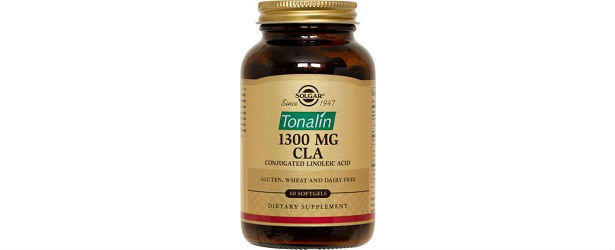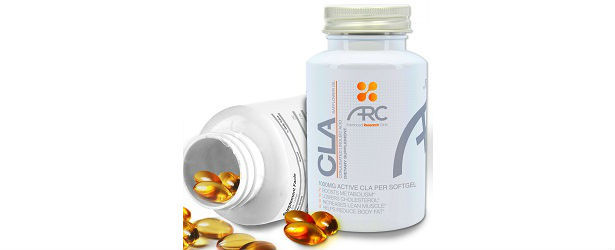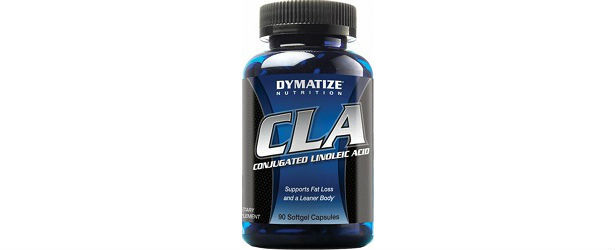
CLA Dosage for Women for Weight Loss
CLA, conjugated linoleic acid, belongs to the omega family of fatty acids- specifically; CLA is a mixture of at least 28 positional and geometric isomers of linoleic acid – an essential omega-6 polyunsaturated fatty acid. Being essential means these fatty acids cannot be produced by the body alone and therefore must be consumed through the diet. CLA has a series of functions within the body, whereby its consumption is required for normal food and energy metabolism and to achieve a healthy nutritional status. CLA can be found in common foods that come from animal products, including meat and dairy however, a large growth in interest of CLA supplements has recently emerged in relation to its weight loss and other health benefits.
 Taking a CLA supplement can provide you with health benefits including muscle growth and weight loss when combined with exercise, disease prevention and increased energy. Typically, as you lose weight you also experience a decrease in muscle mass, but CLA aids in preserving muscle mass while increasing your body’s metabolism. This increased metabolism increases your energy levels and your body’s ability to burn calories. Conjugated linoleic acid may lower LDL cholesterol, and can enhance your immune system, increasing your overall health. The supplement also contains antioxidants, which can help to prevent diseases such as cancer.
Taking a CLA supplement can provide you with health benefits including muscle growth and weight loss when combined with exercise, disease prevention and increased energy. Typically, as you lose weight you also experience a decrease in muscle mass, but CLA aids in preserving muscle mass while increasing your body’s metabolism. This increased metabolism increases your energy levels and your body’s ability to burn calories. Conjugated linoleic acid may lower LDL cholesterol, and can enhance your immune system, increasing your overall health. The supplement also contains antioxidants, which can help to prevent diseases such as cancer.
Our basal metabolic rate is the minimum amount of energy the body requires just to function, whereby an increase in BMR simply means food can be converted into energy at a more efficient rate. CLA is involved in a series of metabolic reactions that regulate fat tissue in the body whereby it is actually thought that through increase the metabolic rate CLA doesn’t decrease overall body weight; but actually acts to alter the body fat to muscle ratio and increase energy expenditure.
 Can you get enough CLA in your diet to achieve beneficial effects on body composition? Probably not, at least if you eat a healthy diet. CLA is found in small quantities in beef, lamb and dairy products. The concentrations in these foods can vary widely. Usually the higher the fat content, the higher the levels of CLA (e.g., whole milk has more CLA than skim milk). Studies provide evidence for favorable effects of CLA on body composition that are independent of diet and exercise. The effects are relatively small, but arguably of important clinical significance.
Can you get enough CLA in your diet to achieve beneficial effects on body composition? Probably not, at least if you eat a healthy diet. CLA is found in small quantities in beef, lamb and dairy products. The concentrations in these foods can vary widely. Usually the higher the fat content, the higher the levels of CLA (e.g., whole milk has more CLA than skim milk). Studies provide evidence for favorable effects of CLA on body composition that are independent of diet and exercise. The effects are relatively small, but arguably of important clinical significance.
Small changes in fat and lean body mass are important, and pave the way to big changes over longer periods of time. These studies and others show effective doses of CLA to be in the 2 to 4 grams per day range (equals 3 to 5 softgels per day assuming each softgel contains about 750 mg of CLA). Importantly, studies show that these doses are safe and not associated with an increased frequency of significant adverse responses.
The usual intake of CLA for people who regularly eat beef is estimated to be a little more than 200 mg/day and about half that for people who avoid beef. The doses used in studies that show improved fat loss use levels that are 10 to 30-fold higher than that typically obtained in the diet, underscoring the need to use dietary supplements in order to achieve effective doses.
TOP 5
CLAProducts |
|||||
| CLA Premium | Nature's Bounty CLA | Natrol Tonalin CLA | Potent Organics CLA | AST Sports Science CLA-1000 | |
|---|---|---|---|---|---|
| 1 | 2 | 3 | 4 | 5 | |
| Price (1 bottle) Price (6 bottles)best value |
$48.00 $138.00 |
$21.99 $131.94 |
$19.29 $115.74 |
$24.73 $148.38 |
$23.99 $143.94 |
| Overall Rating | 99.50% | 83.5% | 79.2% | 69.0% | 62.1% |
| Effectiveness |





|





|





|





|





|
| Speed of Results | Extremely Fast | Good | Average | Slow | Slow |
| Quality of Ingredients | Premium | Good | Good | Average | Unknown |
| Customer Satisfaction Evaluation | 99.40% | 81.5% | 76.7% | 66.9% | 60.0% |
| Safety Evaluation | Safe for Use | Safe for Use | Safe for Use | Safe for Use | Safe for Use |
| Customer Service Rating |





|





|





|





|





|
| Reorder Rate | Highest | Good | Average | Average | Average |
| Return Policy | Risk Free | NO | Risk Free | Risk Free | NO |
| Success Rate | 99.40% | 80.5% | 74.5% | 66.0% | 59.5% |

 Subscribe Now
Subscribe Now











